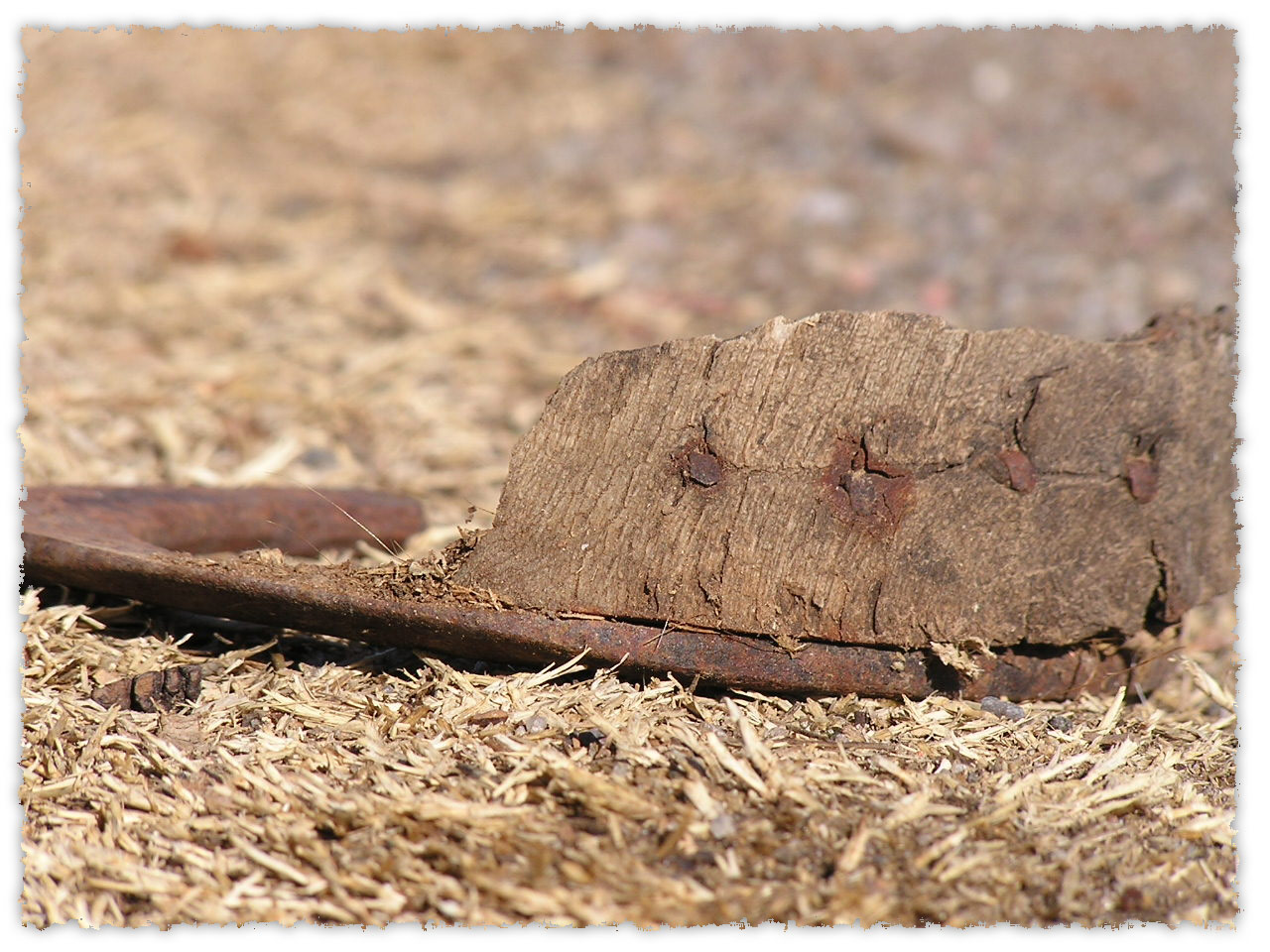
Shoe Pulling
The reasons horses pull shoes are innumerable, and - ultimately - it would take 24-hour surveillance to determine the causes for each incident; nevertheless, I'll address some of the more common concerns. First, I must say that I - and other farriers - can shoe virtually any horse so that he won't pull a shoe, but it will almost always be to the long-term detriment of the horse. Putting on shoes that are fit too short and too tight is never the answer.
Environment
Horses that live in wire enclosures without electrified wiring are prone to pawing at fences and hanging shoes. Because they don't find the shoe hanging in or near the fence, owners will often think this is not the case; however, the torque of hanging the shoe on the fence will often result in an imbalanced (slightly bent) shoe, which will then be prone to come off elsewhere. Horses that live in enclosures which are extremely rocky or littered will also often pull shoes as a result of stumbling or sharply altering their gait to avoid an obstacle.
Over-reaching/Forging
Virtually all horses will overstep their front track with their hind. The trick is that they get their fronts out of the way before the hinds get there. As with people, some are more athletic than others, and you'll see them go for years at a time without stepping off a shoe; others will do so occasionally, and others seem to be terminally klutzy. Usually, minor adjustments (e.g., rebalancing, rolling or rockering front toes, squaring and/or setting back hinds, etc.) can be made in the shoeing process that will help to minimize this problem.
Over-exertion/Fatigue
As a horse gets tired, he's more likely to step off a shoe.
Hesitancy
Horses in training are much more likely to step off a shoe than those which are comfortable with a rider and a task. When you place a horse in a new situation, he's more likely to "scotch," stumble, or just generally be awkward and off balance; subsequently, he's more likely to pull a shoe.
Poor Riding/Multiple Riders/Harsh Riders
Horses must make adjustments and compensatory movements to accommodate riders. Until - and unless - they're adjusted to the rider on their back, they're more prone to pull shoes as they struggle for balance.
Shoeing Cycle
Some horses will get quite clumsy toward the end of their shoeing cycle, and it's not unusual to see horses pull shoes when it's close to time for a reset or new shoes. Shoes protect the hooves from abnormal or excessive wear; part and parcel of this, though, is that they don't allow the hoof to abrade and wear naturally. Subsequently, if they're left on too long, shoes can create real problems for horses.
Imbalanced Hooves
Occasionally, horses will pull shoes because the hoof and/or the shoe has not been properly balanced/leveled at the time of shoeing.
What to Do
If your horse should pull a shoe, your farrier will try to get there in a timely manner to replace it. Realize, however, that there's no way that s/he'll be able to charge you enough for this to be a profitable trip and that s/he'll probably try to work you into the schedule when s/he's working in your area. Until s/he arrives, you can do several things:
1. Find the shoe. If your farrier can reset the shoe, it'll likely be cheaper for you. Also, if s/he can see the shoe, the farrier may well be able to get a "read" on how it was pulled and make minor adjustments that might minimize the possibilities of it happening again.
2. Protect the hoof. In general, we shoe horses to protect their feet and to allow even wear of matched pairs; if a horse is shod on one side and not on the other, he's not going to wear evenly. Subsequently, anything you can do to minimize wear and breakage will be beneficial. Generally, this means keeping the hoof wrapped with duct tape, applying an "easy boot," and/or restricting access to rough terrain and excessive activity.

|





